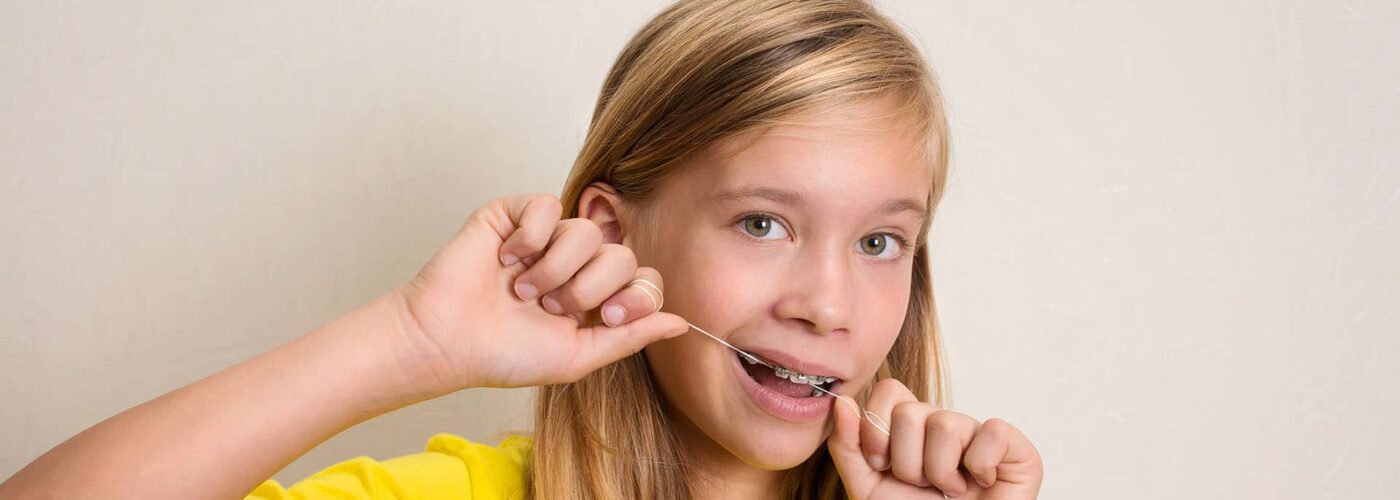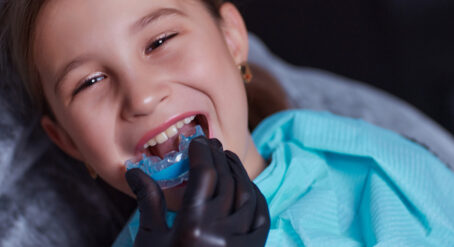We get it, flossing is hard at the best of times. Factor in the fiddly brackets and wires that fill your mouth when you have braces and suddenly the simple task turns into a downright chore. We’re often asked if it is really necessary to floss with braces. And then, usually a bit more quietly, we’re asked if they can just use mouthwash instead. Here’s why you shouldn’t be skipping this important step in your oral hygiene routine.
What is the role of flossing?
Flossing is important because it helps to remove the particles of food and plaque that become wedged between your teeth that brushing alone can’t reach.
Then you’ve got braces, it’s even more important to floss regularly, as the brackets and wires can capture more food particles and plaque. If you’re unsure how to properly floss or feel as though you’re not doing it correctly, you can follow these steps or ask your orthodontist to show you the correct technique at your next appointment. Ask about floss-threaders and Superfloss®, as they can be a great help!
How do I floss?
It can take a bit of trial and error but knowing how to floss properly means your teeth and gums will be kept in the best of shape.
You can do this by following these simple steps:
- Break off about 30cm of floss, wind it around your middle finger and hold tightly between your index fingers and thumbs.
- Gently move the floss down and between your teeth and move it side to side. Be careful not to cut your gums.
- When you reach the base of your tooth (where your gum starts) curl the piece of floss to ensure you don’t miss any bits.
- Repeat between each gap!
- If you have braces, you will need to thread the floss under the main orthodontic archwire first. A floss threader is a very helpful tool to achieve this!
How often should I floss?
It’s recommended you floss once a day. Try and get into a routine and avoid flossing when you’re tried or rushed – you want to make sure you do a good job (even with braces).
What is the role of mouthwash?
It’s easy to see why you’d think that mouthwash can replace your floss – after all it supposedly kills a lot of bacteria in the mouth – but brushing and flossing are still by far the most important parts of oral hygiene. Mouthwash is only an add-on to brushing and flossing. It is generally not required for most healthy mouths. Your orthodontist and family dentist can advise you further on the use of mouthwash.
What if I am having a different type of treatment?
So you’re getting clear aligners like Invisalign®, Spark® and 3M Clarity or instead of traditional braces – does that mean you’ve found the loophole that will let you skip flossing? Definitely not. While the clear plastic aligner trays are removed while you eat, your teeth and gums can still become a breeding ground for bacteria if they are not cared for properly.
So not only should you definitely continue excellent oral hygiene while undergoing your clear aligner treatment, you will need to ensure you still brush your teeth after every meal. A daily routine of thorough brushing and flossing along with cleaning your aligner trays is essential.
If you’re considering orthodontic treatment and the idea of additional dental upkeep is off-putting, it’s important to remember that this advice is the key to lifelong dental health. In addition, it will ensure that your smile is as brilliant as it can be both during and after your orthodontic treatment!
Find an Orthodontist using our tool to search your local area for a registered specialist who can help you perfect your oral hygiene routine









